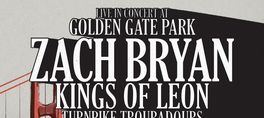Wed March 20, 2024
Find Out About The Gardens of Ancient Rome
SEE EVENT DETAILS
at 88 Selby Lane,
(see times)
On Wednesday March 20, 2020 at 5 PM, at 88 Selby Lane, Atherton, the De Anza Chapter of the American Rhododendron Society shall have a program by Laura Rich on Roman Horti - a Topographical Palimpsest. This talk examines the long strange history of the Imperial gardens that ringed the ancient city of Rome. How did they come to be; what did they look like; what happened to them...and how do we learn about them?
Laura Rich began studying archaeology 10 years ago through Stanford Continuing Studies. Her focus is on Etruscan and Roman archaeology with a particular focus on the topography of Rome. She has excavated at multiple Roman forts in Northern England on Hadrian's Wall, an Etruscan site outside Rome, in the Alps searching for evidence of Hannibal, and at Oplontis Villa B in the shadow of Vesuvius. She served for 4 years on the Board of Directors of the Archaeological Institute of America (AIA) as Vice President of Outreach and Education and still serves as a VP for the AIA Stanford Society.
show less
Laura Rich began studying archaeology 10 years ago through Stanford Continuing Studies. Her focus is on Etruscan and Roman archaeology with a particular focus on the topography of Rome. She has excavated at multiple Roman forts in Northern England on Hadrian's Wall, an Etruscan site outside Rome, in the Alps searching for evidence of Hannibal, and at Oplontis Villa B in the shadow of Vesuvius. She served for 4 years on the Board of Directors of the Archaeological Institute of America (AIA) as Vice President of Outreach and Education and still serves as a VP for the AIA Stanford Society.
On Wednesday March 20, 2020 at 5 PM, at 88 Selby Lane, Atherton, the De Anza Chapter of the American Rhododendron Society shall have a program by Laura Rich on Roman Horti - a Topographical Palimpsest. This talk examines the long strange history of the Imperial gardens that ringed the ancient city of Rome. How did they come to be; what did they look like; what happened to them...and how do we learn about them?
Laura Rich began studying archaeology 10 years ago through Stanford Continuing Studies. Her focus is on Etruscan and Roman archaeology with a particular focus on the topography of Rome. She has excavated at multiple Roman forts in Northern England on Hadrian's Wall, an Etruscan site outside Rome, in the Alps searching for evidence of Hannibal, and at Oplontis Villa B in the shadow of Vesuvius. She served for 4 years on the Board of Directors of the Archaeological Institute of America (AIA) as Vice President of Outreach and Education and still serves as a VP for the AIA Stanford Society.
read more
Laura Rich began studying archaeology 10 years ago through Stanford Continuing Studies. Her focus is on Etruscan and Roman archaeology with a particular focus on the topography of Rome. She has excavated at multiple Roman forts in Northern England on Hadrian's Wall, an Etruscan site outside Rome, in the Alps searching for evidence of Hannibal, and at Oplontis Villa B in the shadow of Vesuvius. She served for 4 years on the Board of Directors of the Archaeological Institute of America (AIA) as Vice President of Outreach and Education and still serves as a VP for the AIA Stanford Society.
show less
Date/Times:
88 Selby Lane,
88 Selby Lane, Atherton, CA 94027
The Best Events
Every Week in Your Inbox
From Our Sponsors
UPCOMING EVENTS
Great suggestion! We'll be in touch.
Event reviewed successfully.









